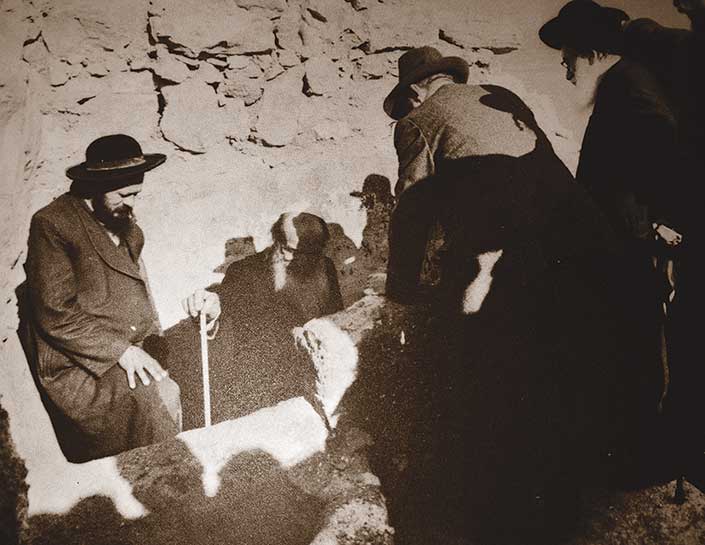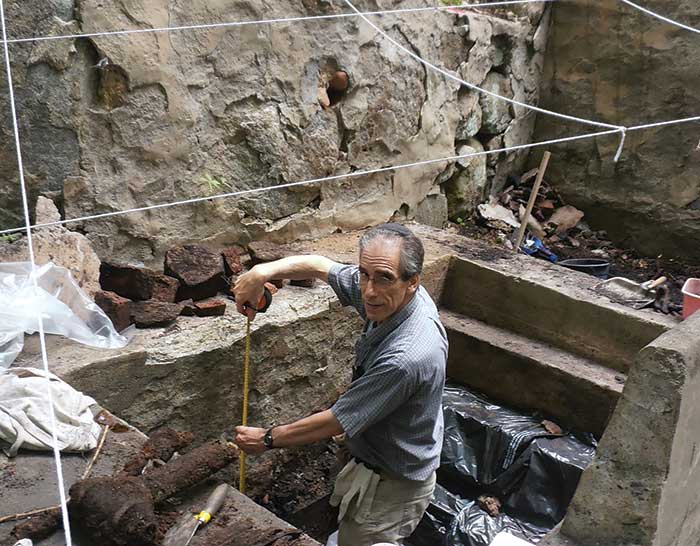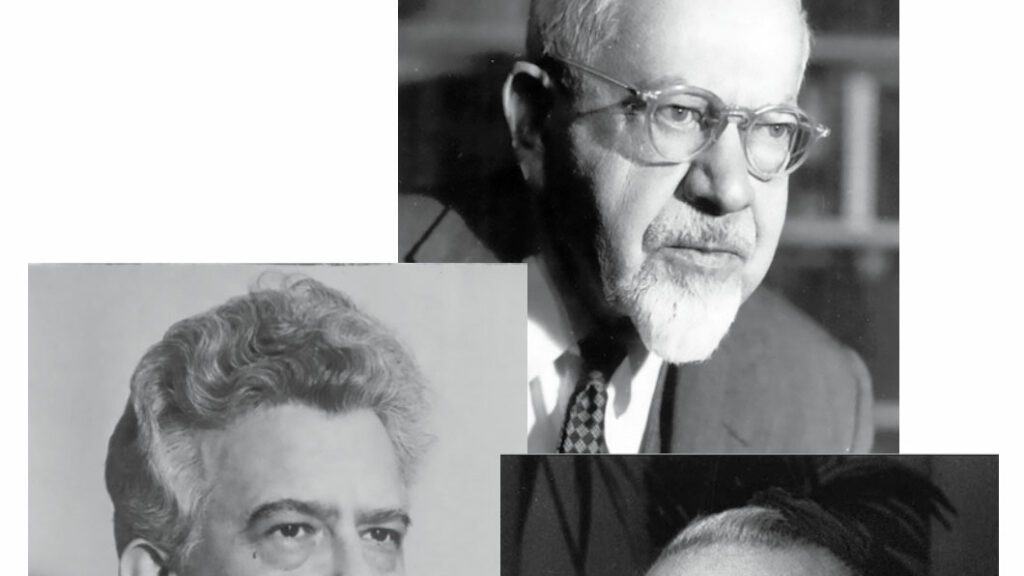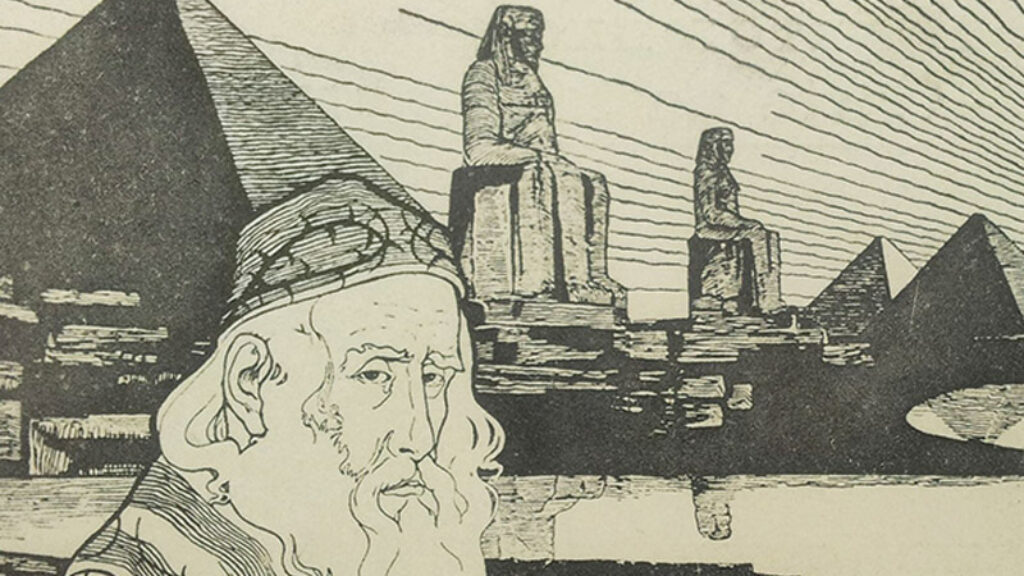Purity and Obscurity
Purity
Is obscurity.
Ogden Nash’s micro-poem is a cynical operation. The sweet little word that dwells in virginal solitude on the first line is quickly betrayed as unintelligible and vague. But if purity seems impenetrable, it is also persistent.
In antiquity, many Jews were deeply committed to ritual purity—a metaphysics of contagion that endangers holy spaces and holy things. As in modern biology, purity’s invisibility to the naked eye posed no problem; to the contrary, the unseen was more threatening precisely because its effects could not be seen. Against the odds and across the ages, elements of this ancient view of the world have persevered. When contemporary Jews of priestly lineage avoid cemeteries, when ordinary Jews wash their hands before eating, or immerse themselves in ritual baths, they are acting according to the dictates of an ancient system.
The temporal and geographic core of Jewish ritual purity was Second Temple Jerusalem. Like a nuclear reactor in which movements are carefully measured and protocols strictly enforced, the Temple operated according to stringent purity rules, including a gradated access system designed to keep away the tainted. Yet, purity was not only a Jerusalem syndrome. In the fields and orchards beyond the Holy City, many of the laws governing priestly tithes were aimed at protecting produce from contamination. Even non-priests formed eating clubs that let the purity punctilious in and kept the careless out. In fact, Second Temple sectarianism was fueled by debates about highly technical rules of purity. Some scholars have even speculated that the sectarians living in the caves around the Dead Sea abandoned Jerusalem because of the ritual challenges presented by urban plumbing. Recently recovered artifacts such as ritual baths and stone vessels (the latter were thought to prevent the spread of impurity) from archeological layers that postdate the destruction of Jerusalem in 70 C.E. show how the Jewish fixation on purity remained entrenched long after the Temple had been destroyed.
Gaining an understanding of purity is thus crucial for appreciating many features of formative Jewish practice, belief, and society. The challenge, however, is that this requires mastering a vast and intricate literature, comparing this literature to the archaeological evidence, and adopting an analytical framework to make sense of the data. In three recent and impressive studies, it is not so much the body of evidence that is new, but rather the working methods and theories which are brought to bear on the material. In Taharah u-kehilla ba-eit ha-atikah (Purity and Community in Antiquity), the Israeli scholar Yair Furstenberg dissects rabbinic texts with a sharp, philological scalpel; Mira Balberg’s Purity, Body, and Self in Early Rabbinic Literature reframes these texts in terms of critical theory; and, as its title implies, Stuart Miller’s At the Intersection of Texts and Material Finds takes stock of the considerable archeological evidence of ancient Jewish purity practices and shows that they cannot be simply read off of the relevant rabbinic texts.

Weighing in at 423 dense and heavily annotated pages, Miller’s book rarely wanders from its scholarly foci and sober tone. Still, it opens with an arresting photograph from the 1960s of four ultra-Orthodox rabbis, fully garbed in black hats and long coats, lowering themselves into a newly excavated ritual bath at Masada, the site of the infamous anti-Roman collective suicide in the Judean desert. The story behind the image is that Yigal Yadin, the larger than life soldier-scholar-politician who directed the excavation, had invited a well-known haredi rabbi named David Muntzberg to examine the Masada ritual bath. As if inspecting the suitability of a newly installed mikvah in an Israeli town, Muntzberg pronounced the outdoor bath kosher, enthusing that it was “among the finest of the finest, seven times seven times.” This allowed Yadin to make an academic (and anachronistic) pronouncement of his own: The inhabitants of Masada were “devout Jews” who “had gone to the arduous lengths of building these rituals baths in scrupulous conformity with the injunctions of traditional Jewish law.”
Miller’s reason for telling the Yadin and Muntzberg tale is cautionary. He warns against straightforwardly interpreting the archaeological record in light of rabbinic texts, or vice versa. Contrary to the maximalists, Miller argues, not every excavated pool is an otzar, a halakhic term of art in mikvah construction still used today. On the other hand, scholars ought not interpret technical rabbinic terms like otzar strictly in light of the ancient archeological evidence. In short, archeologists of late antiquity should not just naively stuff mishnayot in their rucksacks to guide their digs any more than biblical archeologists should follow their 19th-century predecessors in setting out to excavate with a Bible in one hand and a spade in the other. Nonetheless, Miller cautions against the opposite, and now more common, tendency: a trendy minimalism that denies canonical texts any role in reconstructing the ancient history of the region. In short, At the Intersection of Texts and Material Finds calls for two things sorely lacking in our world—erudition and nuance.
A professor at the University of Connecticut for some 25 years, Miller has devoted a long and fruitful career to studying Roman Palestine, and this book is a fine example of how sustained specialization yields judicious insight. It also reveals an insatiably curious scholar willing to follow new paths wherever they may lead, even to his own backyard. The book concludes with a postscript about recent discoveries in Chesterfield, Connecticut, where, along with Connecticut’s state archaeologist, Nicholas Bellantoni, Miller excavated a 19th-century mikvah that was built by the New England Hebrew Farmers of the Emanuel Society. Far from the strong Galilean sun, Miller and his colleagues discovered a ritual bath that conformed to virtually all of the halakhic dictates, leading Miller to draw a modest historical conclusion of his own: Unlike many Jews living in 19th-century American cities—or for that matter, medieval Egypt—who were ambivalent about ritual immersion, a small group of rural Orthodox farmers, with help from Baron de Hirsch, managed to construct and operate a community mikvah.
If Miller bravely descends into the historical chaos of Jewish ritual purity and its textual and material remains, Mira Balberg proudly asserts that she does not want to “utilize the mishnaic texts for historical reconstruction of actual practices, but rather to explore the discourse of impurity that the rabbis construct in the Mishnah.” This is understandable, since the foundational compilation of rabbinic law resists historical analysis. It very rarely refers to historical events and does not distinguish between current laws and dead letters—such as those purity and cultic practices that expired with the destruction of the Temple. But Balberg does not flee to the “safe space” of philological analysis. In italicizing the word “discourse” in the above quotation, she invokes the legacy of French philosopher Michel Foucault, which provides a critical-theoretical escape hatch and new vistas. Rather than historicizing the seemingly ahistorical Mishnah, Balberg treats it as a text that made history by getting its readers to conceive of people, places, things, and their interrelations in novel configurations.

Balberg’s step-by-step reconstruction of rabbinic purity is the most thoroughgoing and innovative in years. First, she notes a seismic shift in biblical versus rabbinic systems of ritual purity that had gone almost unnoticed. Where the Bible was concerned with discrete sources of impurity, such as human corpses, the rabbis described purity as requiring a uniquely mindful mode of being. A rabbinic Jew must constantly assess the menagerie of persons and objects encountered daily: Might this crushed rodent, now lying alongside a pile of fruits, have died on and contaminated them before rolling onto the ground? Perhaps someone or something died in this house, on this couch, inside this pouch?
In crafting their discourse of purity, the rabbis were prepared to define—and redefine—just about everything. This included determining the size and appearance of defiling dead matter, the religious identity of the contaminating dead (in rabbinic law, Gentile corpses do not convey impurity), the kinds of objects that were connected to human activity and human consciousness and thus susceptible to impurity, and even which body parts were regarded as belonging to a body and were thus portals of contamination. As Balberg shows, by grappling with these arcane matters the rabbis developed a distinct view of the human body; the relationship between Jewish subjects bound by divine rules of purity and Gentiles who are not; the strange, invisible connections between people and things; and perhaps even the invention of a distinctly rabbinic “self.” Thus, even at its most complex and obscure, ritual purity played a critical role in the lives of the many Jews who over the years studied these teachings and plumbed their meanings.
Yair Furstenberg thinks that one can write a history of ancient Jewish purity and its role in society, using the Mishnah as a primary source. Skillfully, though not as extensively as Miller, Furstenberg consults the relevant archeological evidence, and like Balberg, but to a lesser extent, he draws upon theoretical insights from outside the field of Jewish studies. His book shows how the Pharisees developed a complex system of purity that was distinct from both the Bible and that of contemporaneous Jewish groups, including Jesus’s circle and the Dead Sea sectarians. This early Pharisaic system was the basis for the Mishnah’s treatment of purity.
Furstenberg’s chief innovation, however, is neither in the path he cuts between text and material remains, nor in his use of theory, but rather in the skill with which he dissects ancient texts, revealing hidden meanings and distinguishing between accreted layers. For those possessing philological souls, there is a palpable thrill to Furstenberg’s chase for the meanings of rabbinic purity.
Furstenberg’s analysis of the rabbinic practice of washing one’s hands before eating bread is an example of his ingenious scholarship. Ask most historically knowledgeable Jews about why they ritually wash their hands before eating and they will probably mumble something about Second Temple priests and the consumption of sacred tithes. Furstenberg begins his discussion by noticing the curious rabbinic terminology for handwashing, which refers to the “giving” (noten) and “taking” (notel) of water to the hands. As it turns out, this terminology is precisely what we find in Greco-Roman manners, as detailed in Deipnosophistae, a 15-volume work that translates as something like “dinner experts.” This philological insight, along with the total absence of ritual handwashing in biblical purity laws, allows Furstenberg to build a case that Jewish handwashing before meals originated in classical table manners and was only later recast as a ritually meaningful purification.
According to Furstenberg, it was this innovation that laid the groundwork for the rabbis’ concern with ingesting food that had become impure by unwashed hands. And it was, of course, precisely this concern that was famously criticized by Jesus of Nazareth, who declared “there is nothing outside a person which by going into him can defile him, rather the things which come out of a person are what defile him” (Mark 7:15). The rabbis, of course, disagreed, as do countless Jews the world over who every Friday night wash their hands, raise two challahs, recite a blessing, and break bread.
Suggested Reading

Between Literalism and Liberalism
While literalism is intellectually untenable and liberalism is numerically imperiled, many Jews find that what they believe cannot be transmitted, and what can be effectively transmitted they cannot believe.
Riding Leviathan: A New Wave of Israeli Genre Fiction
A new batch of Israeli fantasy books may not contain Narnias, but they pound on the wardrobe, rattling the scrolls inside.

Days of Redemption
Did early Zionists abandon Messianism or inherit it? Or, as Arieh Saposnik argues, did they do something more subtle and interesting?
The Jewish Turn of Norman Podhoretz
A new biography charts the rise of Norman Podhoretz, from a young voice of the anti-Communist left, to a leading neoconservative and American Zionist.
Comments
You must log in to comment Log In